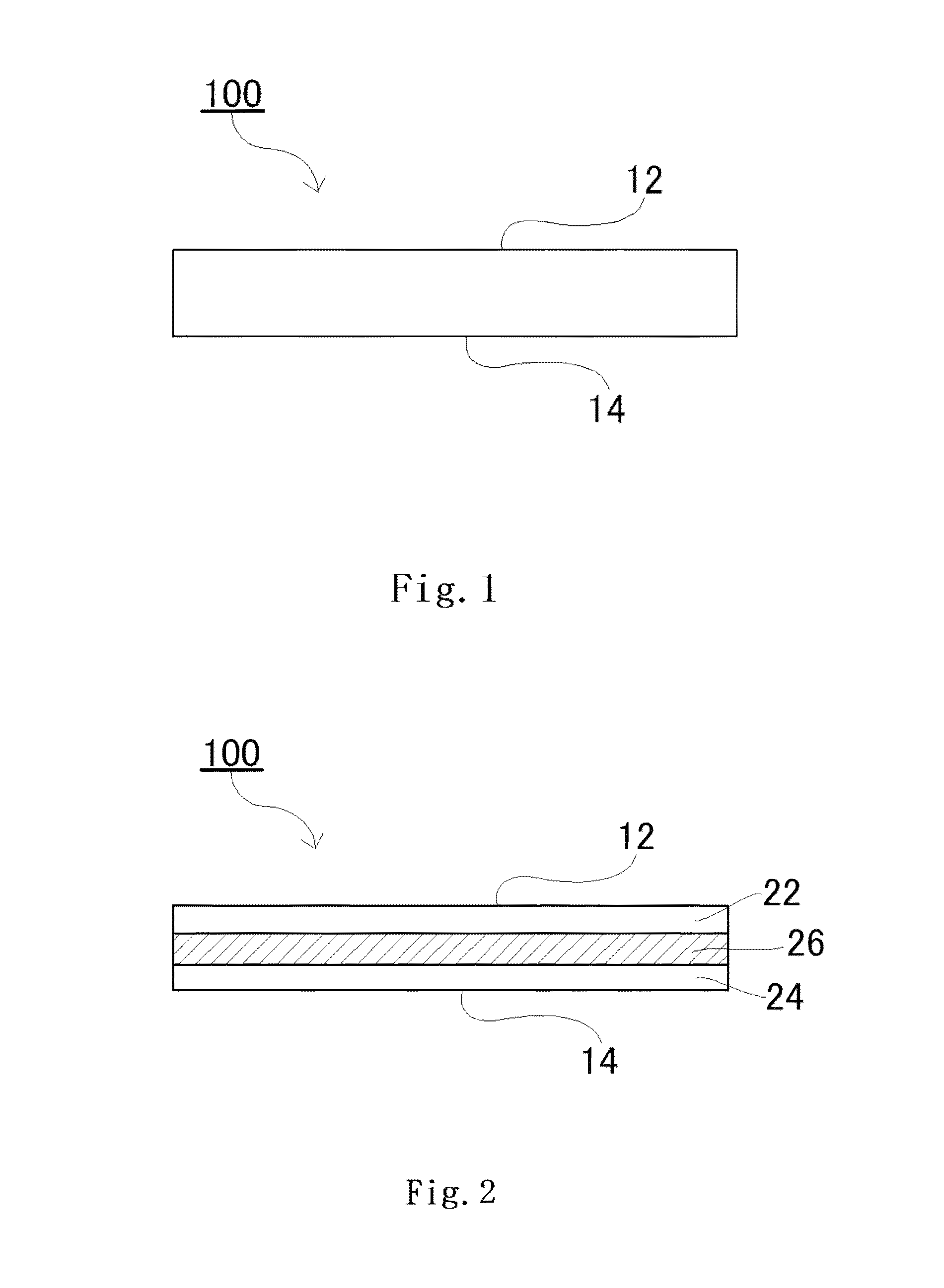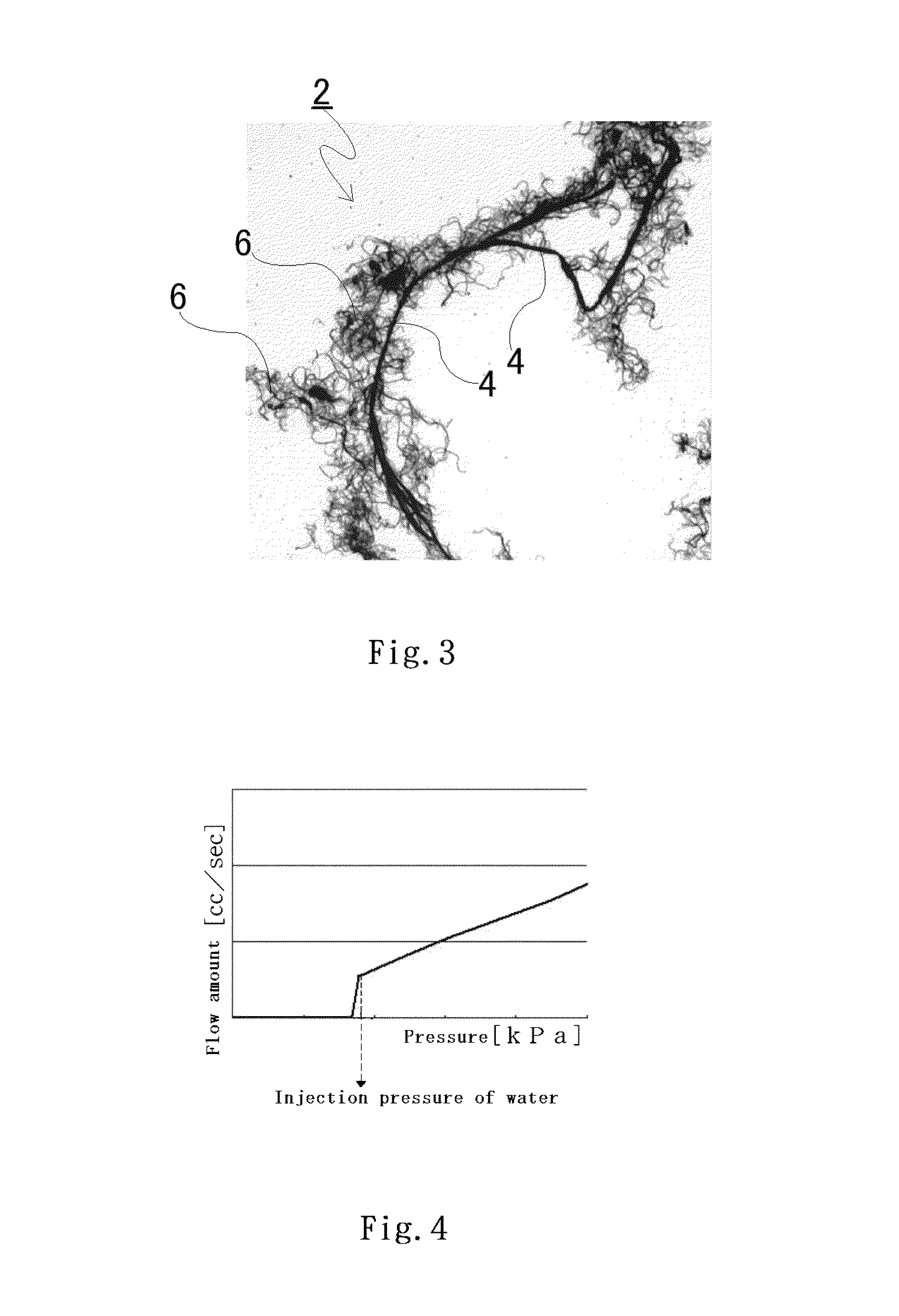Conductive sheet and production method for same
a technology of conductive sheets and production methods, which is applied in the field of conductive sheets, can solve the problems of low conductivity of polyarylate non-woven fabric or glass fiber non-woven fabric used as a base material, low production efficiency of fuel cells using water-repellent conductive sheets as electrode materials, and high cost of fuel cells, so as to prevent the dry out of the electrolyte membrane, improve the conductivity, and improve the effect of water-exhausting properties
- Summary
- Abstract
- Description
- Claims
- Application Information
AI Technical Summary
Benefits of technology
Problems solved by technology
Method used
Image
Examples
first embodiment
[0097]The first embodiment of the present invention is explained below.
(Conductive Sheet)
[0098]The conductive sheet of the first embodiment of the present invention (hereinafter, this sheet may be referred as “present conductive sheet”) is constituted by comprising an aromatic polyamide pulp, a fluoroplastic and a carbon-based conductive material. The fluoroplastic is fused to the fiber surface of the aromatic polyamide pulp. The fluoroplastic allows the present conductive sheet to have hydrophobicity. The carbon-based conductive material is dispersed between the fibers of the aromatic polyamide pulp. The carbon-based conductive material allows the present conductive sheet to have conductivity in the thickness direction of the sheet.
[0099]The thickness of the present conductive sheet is preferably 50 to 500 μm, particularly preferably 100 to 400 μm. With a thickness of smaller than 50 μm, the sheet has a low strength, making difficult the handling of the sheet. With a thickness of l...
second embodiment
[0158]The second embodiment of the present invention is explained below.
(Conductive Sheet)
[0159]FIG. 1 is a side view showing an example of the conductive sheet of the second embodiment of the present invention.
[0160]The conductive sheet 100 of the present embodiment is constituted by comprising an aromatic polyamide pulp, a fluoroplastic and a carbon-based conductive material. The carbon-based conductive material is dispersed between the fibers of the aromatic polyamide pulp. This carbon-based conductive material allows the conductive sheet 100 to have conductivity in the thickness direction. The fluoroplastic is fused to the fiber surfaces of the aromatic polyamide pulp. This fluoroplastic allows the conductive sheet 100 to have hydrophobicity.
[0161]The amount of the fluoroplastic present on the surface of the conductive sheet 100 is different between the first surface 12 (one surface) of the conductive sheet 100 and the second surface 14 (opposite to the first surface 12) of the ...
third embodiment
[0190]The third embodiment of the present invention is explained below.
(Conductive Sheet)
[0191]The conductive sheet in the third embodiment of the present invention is explained using FIG. 1.
[0192]The conductive sheet 100 of the present embodiment comprises an aromatic polyamide pulp, a fluoroplastic and a carbon-based conductive material. The carbon-based conductive material is dispersed between the fibers of the aromatic polyamide pulp and allows the conductive sheet 100 to have conductivity in the thickness direction of the sheet. The fluoroplastic is fused to the fibers of the aromatic polyamide pulp and allows the conductive sheet 100 to have hydrophobicity. The contents of the aromatic polyamide pulp, the fluoroplastic and the carbon-based conductive material are each different between the first surface 12 (one surface) of the conductive sheet 100 and the second surface 14 (other surface opposite to the first surface 12). Accordingly, water infiltrability differs between the f...
PUM
| Property | Measurement | Unit |
|---|---|---|
| pore diameter | aaaaa | aaaaa |
| density | aaaaa | aaaaa |
| static contact angle | aaaaa | aaaaa |
Abstract
Description
Claims
Application Information
 Login to View More
Login to View More - R&D
- Intellectual Property
- Life Sciences
- Materials
- Tech Scout
- Unparalleled Data Quality
- Higher Quality Content
- 60% Fewer Hallucinations
Browse by: Latest US Patents, China's latest patents, Technical Efficacy Thesaurus, Application Domain, Technology Topic, Popular Technical Reports.
© 2025 PatSnap. All rights reserved.Legal|Privacy policy|Modern Slavery Act Transparency Statement|Sitemap|About US| Contact US: help@patsnap.com



